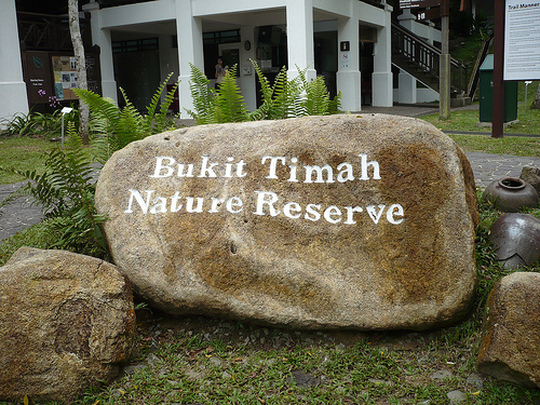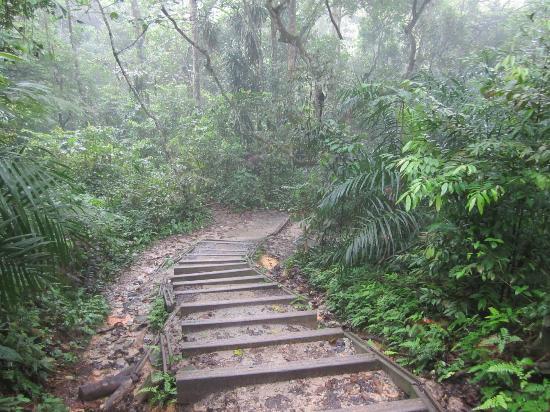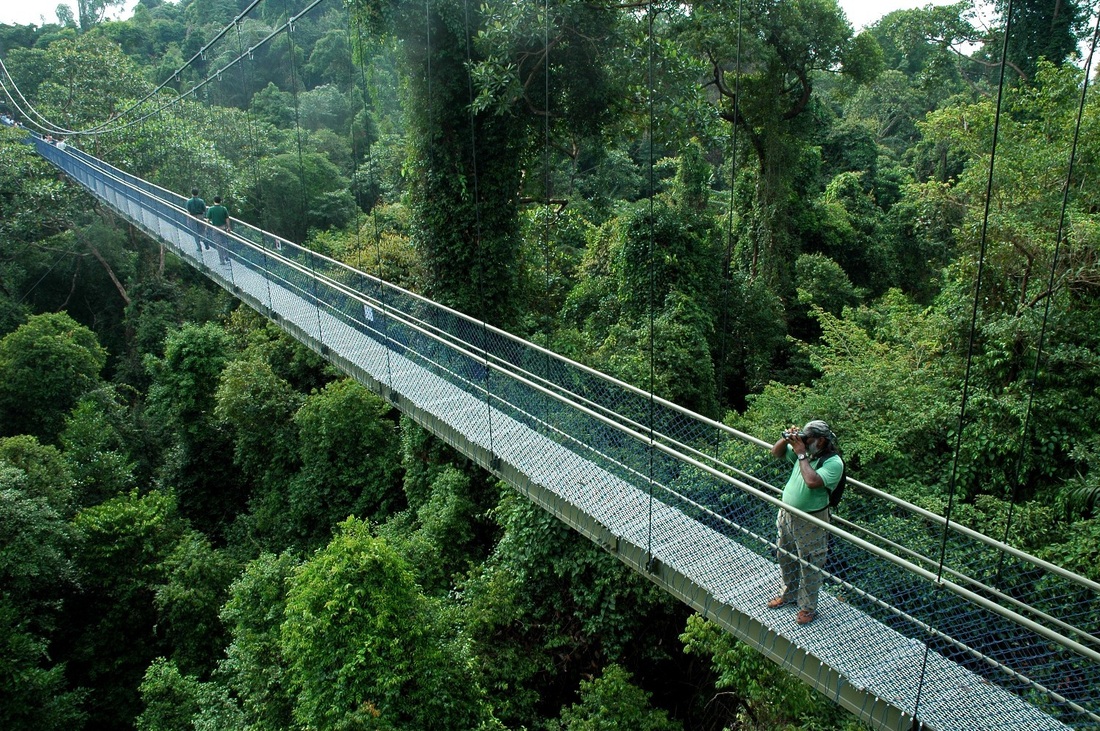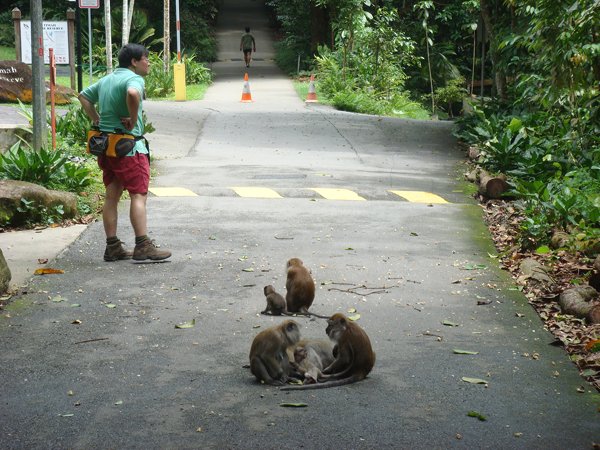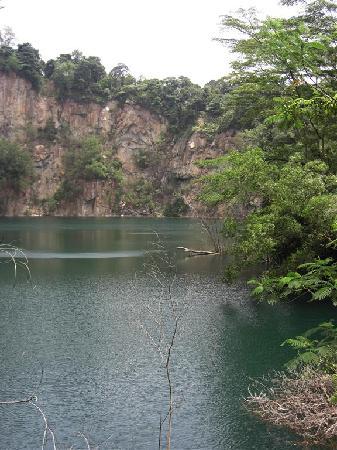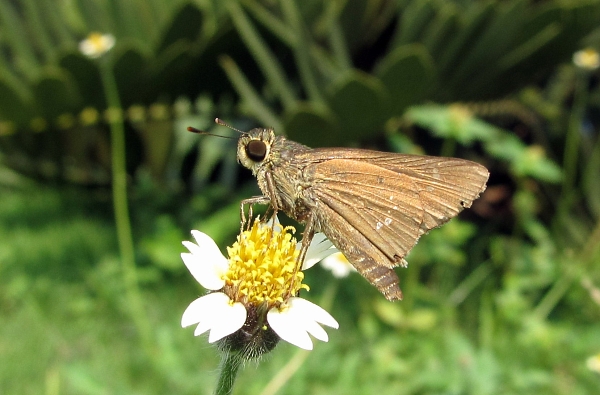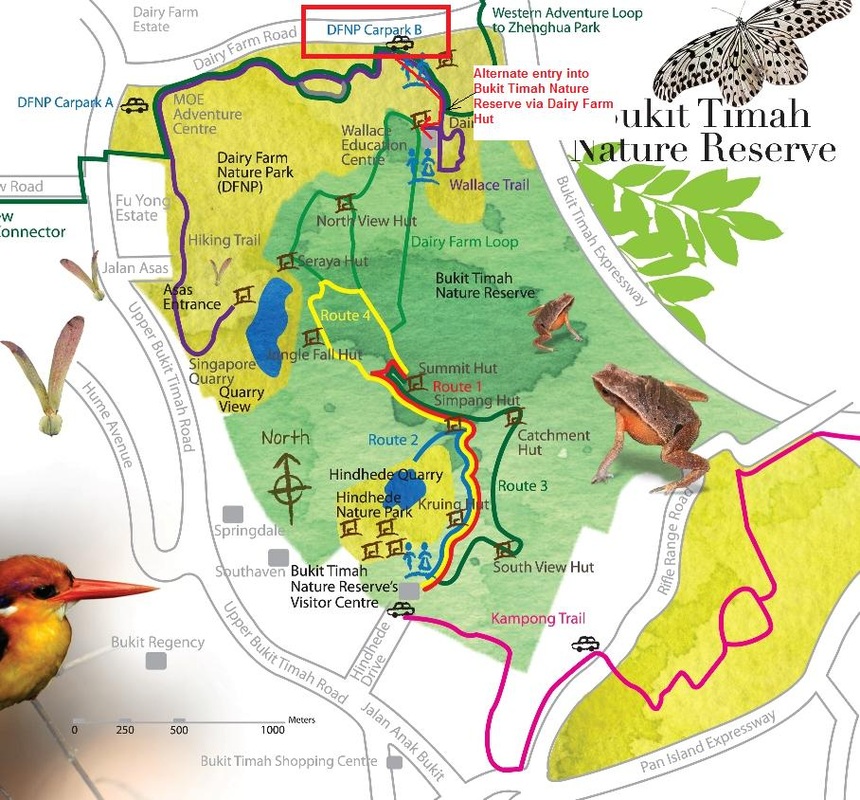|
Bukit Timah Nature Reserve
Bukit Timah Nature Reserve is Singapore's second ASEAN Heritage Park. It officially opens as Asean Heritage Park on 18 October 2011. Together with Sungei Buloh Wetland Reserve, it is part of the regional network of 30 protected areas, forming the complete spectrum of representative ecosystems in ASEAN. Bukit Timah hill at a height of 16.3 meters is Singapore’s tallest hill. Bukit Timah reserve covers an area of 16.4 square kilometers and is bounded by MacRitchie Reservoir, Upper and Lower Peirce Reservoir and Upper Seletar Reservoir. It has about 40% of the nation's flora and fauna here. One of Singapore’s oldest trees, Shorea Curtisii trees have existed here for almost 400 years. There is also a rare Mock Durian (Neesia synandra) which is inedible but looks like a durian. There are also rare fauna like the Forest Praying Mantis and the Singapore Freshwater Crab as well as other animals like the pangolin, Horsfield's Flying Squirrel and Colugo. Bukit Timah Nature Reserve and Central Catchment Nature Reserves are protected by the Parks & Trees Act 2005 for the conservation of our native biodiversity. Activities prohibited within the nature reserves include hiking in groups of more than 30 without a permit, releasing of animals, feeding of animals, removing of native flora and fauna from the nature reserves, cycling, walking off the designated trails are just some of these activities. Getting Here
Opening hours of the Visitor Centre: 8.30am – 5:00pm Bukit Timah Nature Reserve opening hours: 6.00am to 7pm By Bus: Alight at Upper Bukit Timah Road, opposite Bukit Timah Shopping Centre for a 10-minute walk to the Reserve. Buses serving Upper Bukit Timah Road are 67, 75, 170, 173, 184, 852 and 961. By Car: From the city, drive in the direction of Upper Bukit Timah towards Woodlands, make a U-turn at the first pedestrian bridge you see, and then turn left into Hindhede drive to the Reserve. There is a carpark at the Visitor Centre. It is open from 6:00am to 7:00pm. Alternative parking is available at Bukit Timah Shopping Centre and Beauty World Shopping Centre. Hiking trails
Bukit Timah Nature Reserve Walking Trails Route 1 (Red) Distance (one-way): 1.2km Approximate walking time (return trip): 45 mins Trail grade: Easy Route 2 (Blue) Distance (one-way): 0.7km Approximate walking time (return trip): 35 mins Trail grade: Easy Route 3 (Green) Distance (one-way): 1.9km Approximate walking time (return trip): 1 hr 40 mins Trail grade: Moderate to difficult Route 4 (Yellow) Distance (one-way): 1.8km Approximate walking time (return trip): 2 hrs Trail grade: Difficult Kampong Trail (Pink) Approximate walking time (return trip): 1.5 hrs Trail grade: Easy Mountain Biking Trail (Orange) Distance (loop): 6km Approximate travel time: 30 mins to 1 hr Trail grade: Moderate to difficult Attractions to look out for
1.Meninjau Trees (Gneteum gnemon) As you walk towards the Visitor Centre, there are two columnar trees next to the tarmac road on the left. These two trees are known as Meninjau Trees, native to the Southeast Asia region. The most well-known product from this tree is the bitter-tasting belinjau crackers or emping belinjau which are made from the fruits. These are then sunned, fried and eaten as ‘keropok’, a popular appetiser with Indonesian dishes. 2.Dipterocarps There are a total of 18 dipterocarp species over here. The majestic dipterocarps are best known as the tallest hardwood trees of the rainforest and most of them are emergents (rising above the canopy). These trees can grow up to a height of 40-70 metres and are commercially viable as tropical hardwood timber. Dipterocarpus simply means “two-winged fruit”. 3.Battle Reminders Early in the trail, you can see a huge bronze plaque which tells the story of the Battle for Bukit Timah during World War II. Indeed, Bukit Timah Nature Reserve is not only rich in natural heritage but also history. Bukit Timah Nature Reserve was not only ravaged by World War II but also mistreated and misused after the war. Cars used to be driven up to the summit which left Bukit Timah Nature Reserve in a bad state. Since the 1970s, no vehicles are permitted up the summit. 4.Fan Palm (Licuala ferruginea) Fan Palm grows under the shade of the forest canopy. Its beautiful wedge-shaped fronds radiating from long stalks make it a popular ornamental plant. Licuala leaves are used to make roof thatches, hats, umbrellas and for wrapping food. 5.Thorny Rattans
Thorny Rattans has sharp spikes on its stems and leaves. The spikes help the rattans cling on to trees aside from protecting them. In the Philippines, these stems are treated and fashioned into beautiful tropical furniture. 6.Insects The incessant buzz of the Cicadas greets you the moment you step into the Reserve. “Cicada” is a direct derivation of the Latin word meaning “buzzer”. These insects make the loudest of insect noises in the world.They are an important source of food for birds. Along the trail, you may find the inch-long Giant Forest Ant (Camponotus gigas), a native to Southeast Asian forests. They do not bite human beings. The Golden Orb Web Spider (Nephila pilipes) makes the largest and strongest web among spiders. It gets its name from the golden colour of its silk and has red shiny legs. St Andrew’s Cross Spider (Argiope mangal). This spider gets its name for the way it holds its eight legs in pairs to form an X shape. A myriad of other insects like grasshoppers, stick insects and beetles can be found in the low undergrowth. 7.Birds The Reserve is home to a variety of birds.The Greater Racket-tailed Drongo (Dicrurus paradiseus) is easy to spot with distinctive elongated outer tail feathers. It is often perched among the trees in mid-canopy and can mimic a range of calls of other birds. You can easily spot a Greater Racket-tailed Drongo near the Long-tailed Macaques as this very smart bird will follow the monkeys through the forest, feasting on the insects that are disturbed by their movements.You can always recognise a Red-crowned Barbet (Megalaima rafflesii) by its bright red cap stretching from the bill to the nape. It has light blue markings on the chin and throat whilst the rest of the bird is generally bright leaf-green. The ground is sometimes just the place to spot the Emerald Dove (Chalcophaps indica) where it is often searching for fallen fruit. Their call - a low soft cooing consisting of about six to seven coos starting quietly and then rising. They also call a nasal "hoo-hoo-hoon". 8.Animals Keen observers may spot the Malayan Colugo (Cynocephalus variegatus). Look up for any unusual ‘bump’ on tree trunks. It could turn out to be the tree-dwelling mammal. Colugos are sometimes called ‘flying lemurs’ but they are in fact not related to lemurs. They eat leaves and young shoots. In the day, they tend to cling to the trunks of trees, hide in tree holes or stay at the top of trees. They are more active at night. Squirrels are often seen hopping from tree to tree. Two kinds of squirrels can be found in the Reserve – the Plantain Squirrel (Callosciurus notatus) which is orange with black and white stripes, and the grayish Slender Squirrel (Sundasciurus tenuis). If you are very lucky, you may see the extremely rare Malayan Pangolin (Manis javanica), also known as the Scaly Anteater. There are also a variety of snakes here such as the Reticulated Python (Python sreticulatus) and Paradise Tree Snake (Chrysopelea paradisi) but it is difficult to see them as they are sensitive and tend to shy away from the presence of people. Did you know?
1.Bukit Timah area used to be infested by tigers back in the 19th century. Hunting of the tigers and leopards as well as clearing of the forest led to their extinction by 1930. 3.Hindhede Nature Park in Bukit Timah used to be a quarry for granite until mid of 20th century when all the granites are exhausted. 4.Bukit Timah used to be industrial estates until the 60s whereby the industrial developments are moved to Jurong and Bukit Timah turned into a prestigious private residential estate district 11. 5.Bukit Timah Turf Club was built in 1933. During Japanese occupation, it ceased operation and only restarted the races in the 1960s. Queen Elizabeth II with her husband Prince Philip visited Bukit Timah racecourse back in 1972. It is relocated to Kranji in 2000 as Bukit Timah is a prime area for private housing development. |
Health Tips
|
